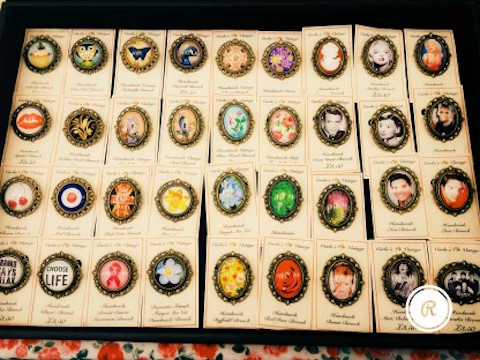Vox Pop: Do you wear a watch?
Ian Bottirill from Gwynedd
“Yes I always wear one to tell the time, and even though I have a mobile phone I still use my watch. I actually have four including one for mountain climbing!”
Charlie Ruddiforth from Monmouth
“No, I never wear a watch as I don’t like wearing things on my wrists. I am also scared of slamming it down and smashing it so just check my phone”
Tom Sasbury from Aberystwyth
“No because I only get rubbish watches for Christmas. I always set my mobile phone clock 15 minutes ahead though as I am always late!”
June Edwards from Heath, Cardiff
“Yes, as putting on a watch is the first thing I do in the morning and last thing I do at night. I also have quite a few watches for different occasions.”
Rick Hallett from Chepstow
“I don’t wear a watch as I don’t like things on my wrists so I have never worn one. I am happy just to use my mobile phone to tell the time.”
Sam Chapman from Aberystwyth
“No I don’t anymore as my watch is broken. I don’t think I will buy another as I am not fussed about wearing one, I will probably just use my mobile.”
A watch’s function is simple. Whether someone is running late for work or trying to make their doctor’s appointment, the wristwatch comes to the rescue.
Or does it? This year there is a competitor in the form of the ‘smart-watch’ which could cause concern for Cardiff jewellers and horologists who are learning the craft of time. So with new mobile phones, tablets and e-readers released every month, could this spell the end for the watch, a device which has stayed strong since the 1920s?
Lynda Currell who has worked for On Time a stall in Cardiff Central Market, for 15 years explains how in the past few years she has noticed sales of her product decline, “We were so much busier even up to five years ago, I suppose it is because of the recession.”
However the sale of batteries and watch straps are still profiting as Currell insists that in a day she could sell up to 60 Swiss batteries. This illustrates that although people may not be buying watches they are still using them. On Time is filled with an array of basic £8.95 watches juxtaposed with bright colourful watches that are clearly more defined as an accessory.
“We get a lot of people that want a bit of glitz and bright colours; they want something that is big and flash. Most of these are young girls that want a fashion accessory,” says Currell.
Fashion over function
The idea that the watch is now seen as more of a statement than a practical device is one that Jeremy Langmead, editor of http://www.mrporter.com/, has discussed.
Langmead believes that due to a few ‘”forceful and inventive characters” in the mid-1980s the marketing of watches prevented the timepiece from becoming forgotten. He explains that now the watch is like a Saville Row suit, something that is a statement and definition of being a man as he sees, “The idea that technology would deal a fatal blow to the watch simply hasn’t panned out. Men now own mobile phones and Blackberrys as well as, not instead of, their timepieces.”
Indeed, with just one flick through magazines like Esquire, the reader is bombarded with adverts for the latest expensive watch.
[youtube]http://www.youtube.com/watch?v=-wJD31DDDTQ[/youtube]
So are people indulging in the watch rather than buying their basic £8.95 one from On Time? Debbie Ralle from David Edward’s Jewellers in Cardiff has the profits to prove that this is the case. They specialise in watches like Rolex and Cartier that have been pre owned with prices that can reach up to £7,000.
“A lot of men come in, for them it’s like women and their shoes. They are very particular as they know exactly what they want,” says Ralle.
Teaching time
There is clear evidence that although the sales of watches might have been shaken by the recession there are people that still wear watches. In a Facebook poll of 50 people aged 16-30, 64% claimed they still wore a watch regularly. Even more encouragingly the British Horological Institute who runs courses for people that are interested in the science of making timepieces, has seen an increase of people wanting to study.
“There has been a growth of over 50% in global sales in our recently rewritten distance learning course this year,” confirms general manager Martin Taylor.
With people still learning the craft of clock making, owning businesses and ultimately still enjoying wearing their watch there seems little chance that this timepiece will become overshadowed by technology. In fact, much like the drastic re-marketing in the 1980s the watch is now working with technology rather than against it.
A mobile watch
Now there are gadgets called smart watches. These are a selection of watches that link with a mobile phone so that someone can check whether they have a new text message or Facebook notification by a flick of the wrist. This year Google has patented a watch called “Smart-watch including flip up display” which is a timepiece that has a clear touchscreen that flips up from the base of the watch to become a secondary display.
However these smart watches have been met with criticism and disappointing sales so there appears to be no threat to the traditional watch. It will still get the beholder to their destination in time for many years to come.
Vox Pop: Do you wear a watch?
Ian Bottirill from Gwynedd
“Yes I always wear one to tell the time, and even though I have a mobile phone I still use my watch. I actually have four including one for mountain climbing!”
Charlie Ruddiforth from Monmouth
“No, I never wear a watch as I don’t like wearing things on my wrists. I am also scared of slamming it down and smashing it so just check my phone”
Tom Sasbury from Aberystwyth
“No because I only get rubbish watches for Christmas. I always set my mobile phone clock 15 minutes ahead though as I am always late!”
June Edwards from Heath, Cardiff
“Yes, as putting on a watch is the first thing I do in the morning and last thing I do at night. I also have quite a few watches for different occasions.”
Rick Hallett from Chepstow
“I don’t wear a watch as I don’t like things on my wrists so I have never worn one. I am happy just to use my mobile phone to tell the time.”
Sam Chapman from Aberystwyth
“No I don’t anymore as my watch is broken. I don’t think I will buy another as I am not fussed about wearing one, I will probably just use my mobile.”











